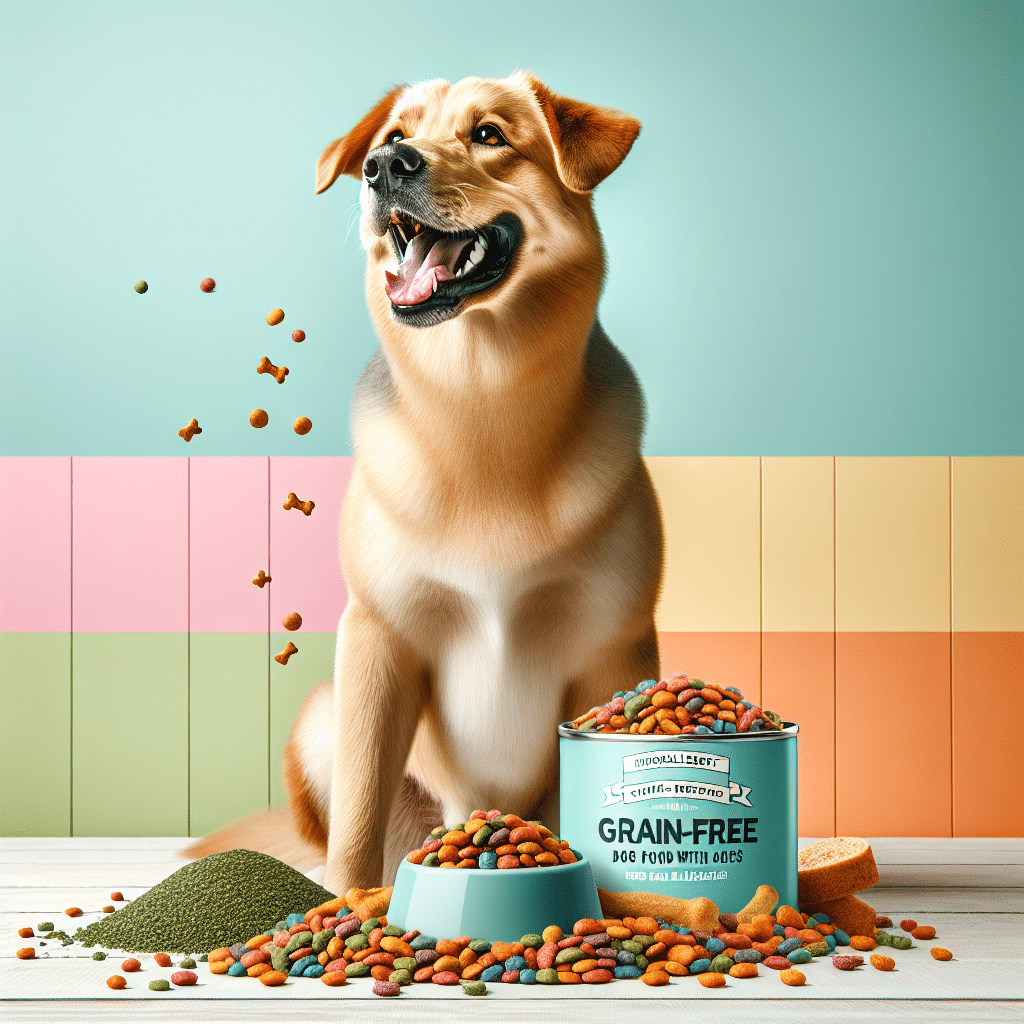Understanding Grain-Free Dog Food for Allergies
What Are Dog Food Allergies?
Dog food allergies occur when a dog’s immune system mistakenly identifies a component in their diet as a harmful substance. This can lead to various symptoms, including itching, skin inflammation, gastrointestinal upset, and ear infections. Common allergens in traditional dog food include grains such as wheat, corn, and soy, as well as proteins like beef and chicken.
Why Choose Grain-Free Dog Food?
Grain-free dog food eliminates grains, reducing the likelihood of triggering allergic reactions in sensitive dogs. These diets often focus on high-quality proteins and wholesome vegetables, making them a popular choice for dogs with food allergies or intolerances.
-
Improved Digestion: Many dog owners report that their dogs experience improved digestive health when switched to grain-free diets. This can lead to firmer stools and less bloating.
-
Reduced Allergic Reactions: For dogs with known sensitivities, grain-free formulations may decrease itching, ear infections, and gastrointestinal issues, providing a more comfortable life for the dog.
Key Ingredients to Look For
When selecting grain-free dog food, it’s essential to understand what ingredients provide balanced nutrition for your dog without compromising their health. Here are some key elements to consider:
-
Protein Sources: Look for named meat sources (e.g., chicken, lamb, or fish) as the first ingredient. This ensures high protein content, which is vital for muscle development and energy.
-
Legumes: Many grain-free diets utilize peas, lentils, and chickpeas as primary carbohydrate sources. These ingredients offer fiber and protein without the allergens associated with traditional grains.
-
Fruits and Vegetables: Sweet potatoes, carrots, and blueberries are excellent additions that provide essential vitamins, minerals, and antioxidants. It’s important for the overall health and well-being of your dog.
-
Omega Fatty Acids: Ingredients like fish oil or flaxseed contribute to healthy skin and coats, which is especially beneficial for dogs with allergies.
What to Avoid in Grain-Free Dog Food
While grain-free diets have many benefits, not all options are created equal. Avoid foods that contain:
-
Fillers: Ingredients like corn and soy provide little nutritional value and may still trigger allergies.
-
Artificial Additives: Colors, flavors, and preservative chemicals can be harmful and should be avoided.
-
Low-Quality Meat Meals: These can contain unclear meat sources and lack essential amino acids necessary for a dog’s diet.
How to Transition to Grain-Free Dog Food
Making the switch from traditional dog food to a grain-free version should be done gradually. A sudden change can upset your dog’s digestive system. Follow these steps:
-
Week 1: Mix 75% of the old food with 25% of the new grain-free food.
-
Week 2: Change the ratio to 50/50.
-
Week 3: Adjust to 25% old food and 75% new food.
-
Week 4: Gradually transition to 100% grain-free.
During this period, monitor your dog for any adverse reactions, including gastrointestinal issues or skin irritations. If reactions occur, consult your veterinarian and consider alternative options or specific protein sources.
Brands to Consider
Several reputable brands specialize in grain-free dog food designed for sensitive dogs. Some of the top-rated options include:
-
Blue Buffalo Wilderness: This high-protein recipe is grain-free and uses high-quality sources, helping dogs maintain optimal energy levels.
-
Wellness CORE: Known for its grain-free formulas, Wellness CORE offers an array of protein options while adding fruits and vegetables for a nutrient-dense meal.
-
Orijen: Renowned for using fresh, regional ingredients, Orijen provides a biologically appropriate diet mimicking the natural canine diet in the wild.
-
Merrick Grain-Free: Offering numerous flavors, Merrick grain-free recipes are packed with protein and enriched with probiotics for digestive health.
-
Taste of the Wild: This brand emphasizes natural ingredients and includes unique protein sources like bison and venison, catering to pets with specific dietary needs.
Consulting a Veterinarian
Before making significant changes to your dog’s diet, it’s crucial to consult your veterinarian. They can guide you through the process and help identify specific allergies through tests, ensuring a tailored approach based on your dog’s unique needs.
Monitoring for Allergic Reactions
Once you’ve adopted grain-free dog food, monitor your dog for any changes in behavior or health. Look out for these signs:
-
Skin Issues: Excessive itching, redness, or lesions can indicate allergic reactions.
-
Digestive Problems: Diarrhea or vomiting may suggest that the new food isn’t suitable.
-
Weight Changes: Unexpected weight loss or gain may also require further investigation.
Maintaining a food diary can help in tracking your dog’s reactions to new foods and pinpointing any problematic ingredients.
Conclusion
Choosing the right grain-free dog food is a significant decision for your dog’s health, especially if they suffer from allergies. By understanding the ingredients, monitoring their health, and consulting with veterinary professionals, pet owners can provide their furry companions with a balanced, nutritious diet suited to their needs. Grain-free diets can be an excellent option for enhancing the quality of life for dogs with sensitivities, ensuring they thrive without discomfort.
